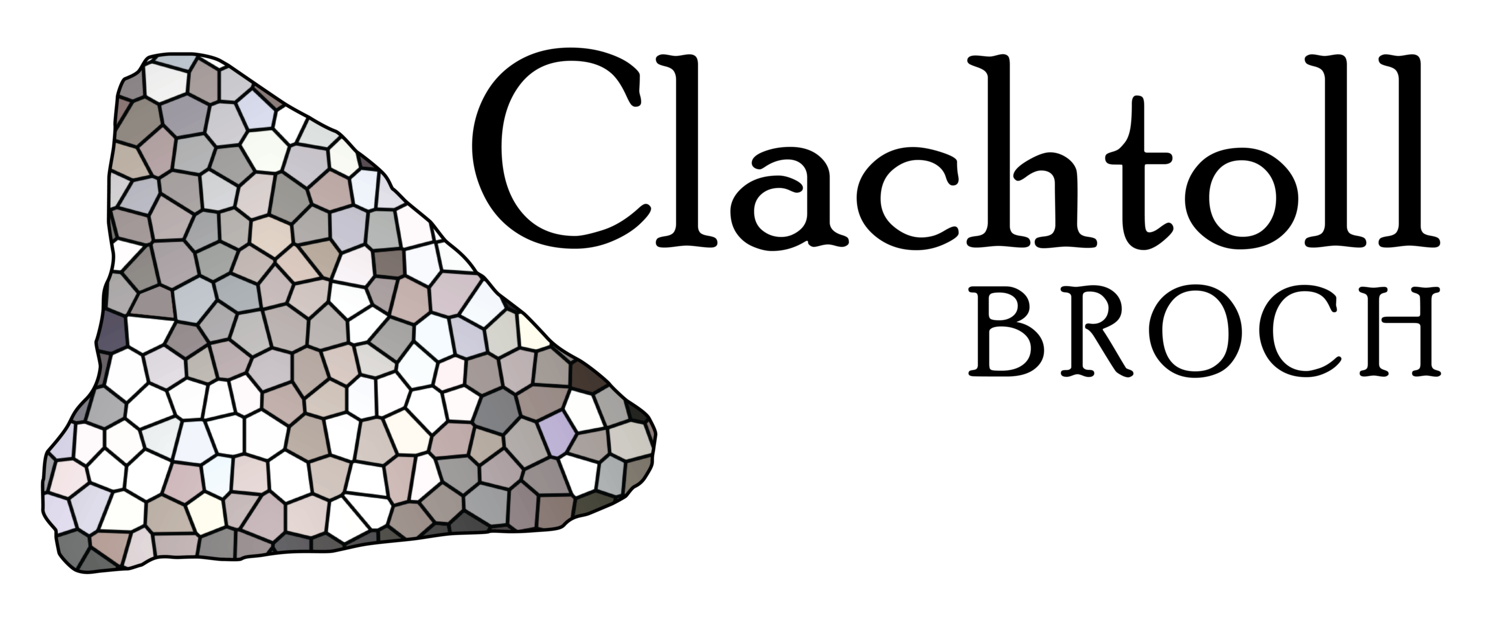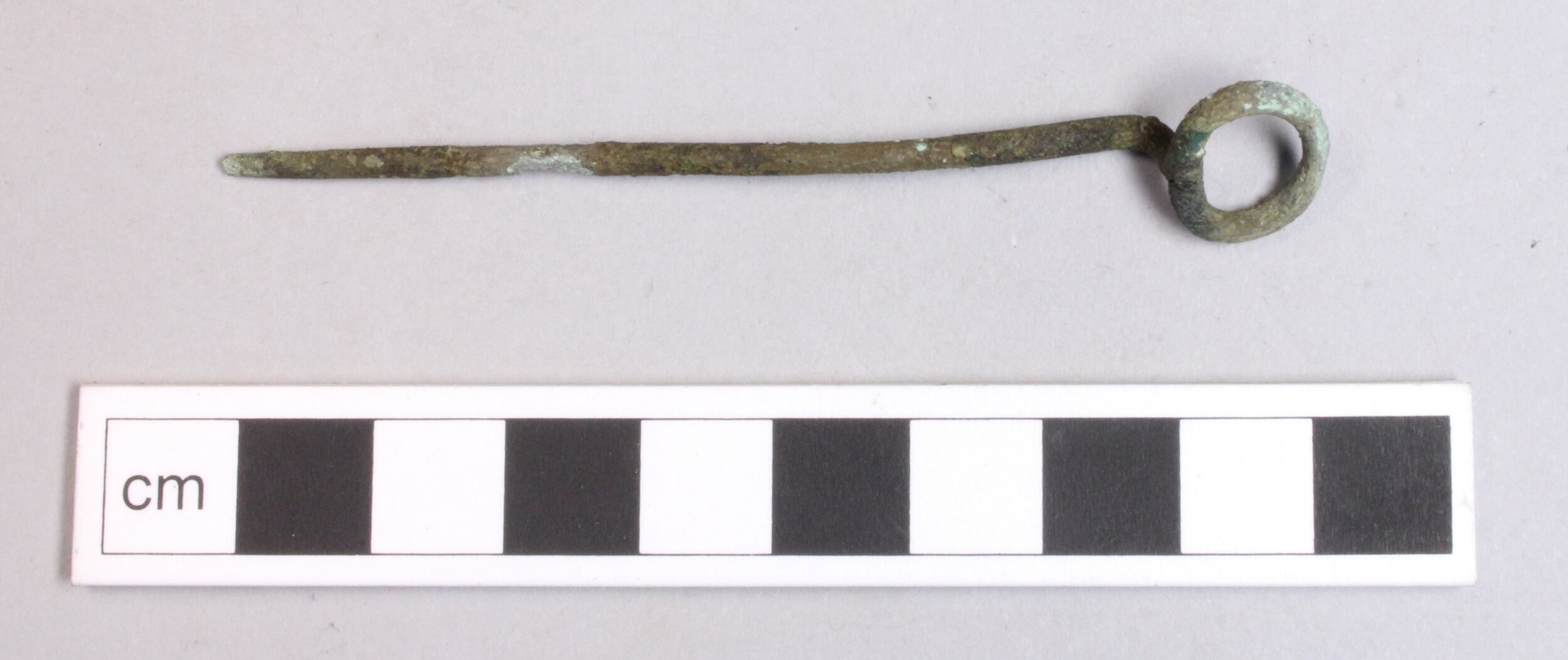
An astonishing survival
Only two copper alloy artefacts were found at the broch.
The first was small, curving fragment of sheet copper alloy. Sheet copper alloy was used to make a range of objects in the Iron Age, including beautiful bowls, but we can’t tell what this fragment used to be.
The second was a copper alloy pin, the discovery of which was the source of great excitement during the excavations.
Careful excavation of a ring-headed pin at #Clachtoll 😀 Classic Iron Age type. We were pretty delighted with this! @coigachassynt #pubarch pic.twitter.com/qOVP9g40p7
— AOC Archaeology (@aocarchaeology) September 8, 2017
The pin was found to be in almost perfect condition, with only a small piece missing at the tip. Projecting ring-headed pins were either made from wire or cast from molten metal, either iron or copper alloy. They are commonly found on Iron Age sites across Scotland, and were particularly widespread in the Hebrides.
Ring-headed pins didn’t function only as dress accessories: they were also used to decorate pottery.
The ring-headed pin
Potsherd and pin
One of the sherds of pottery from the broch was found to have an impressed design, the dimensions of which looked remarkably similar to the pin… They appear to be a match! The pin and potsherd together provide a rare and tangible link to the potter who made and marked the vessel.


